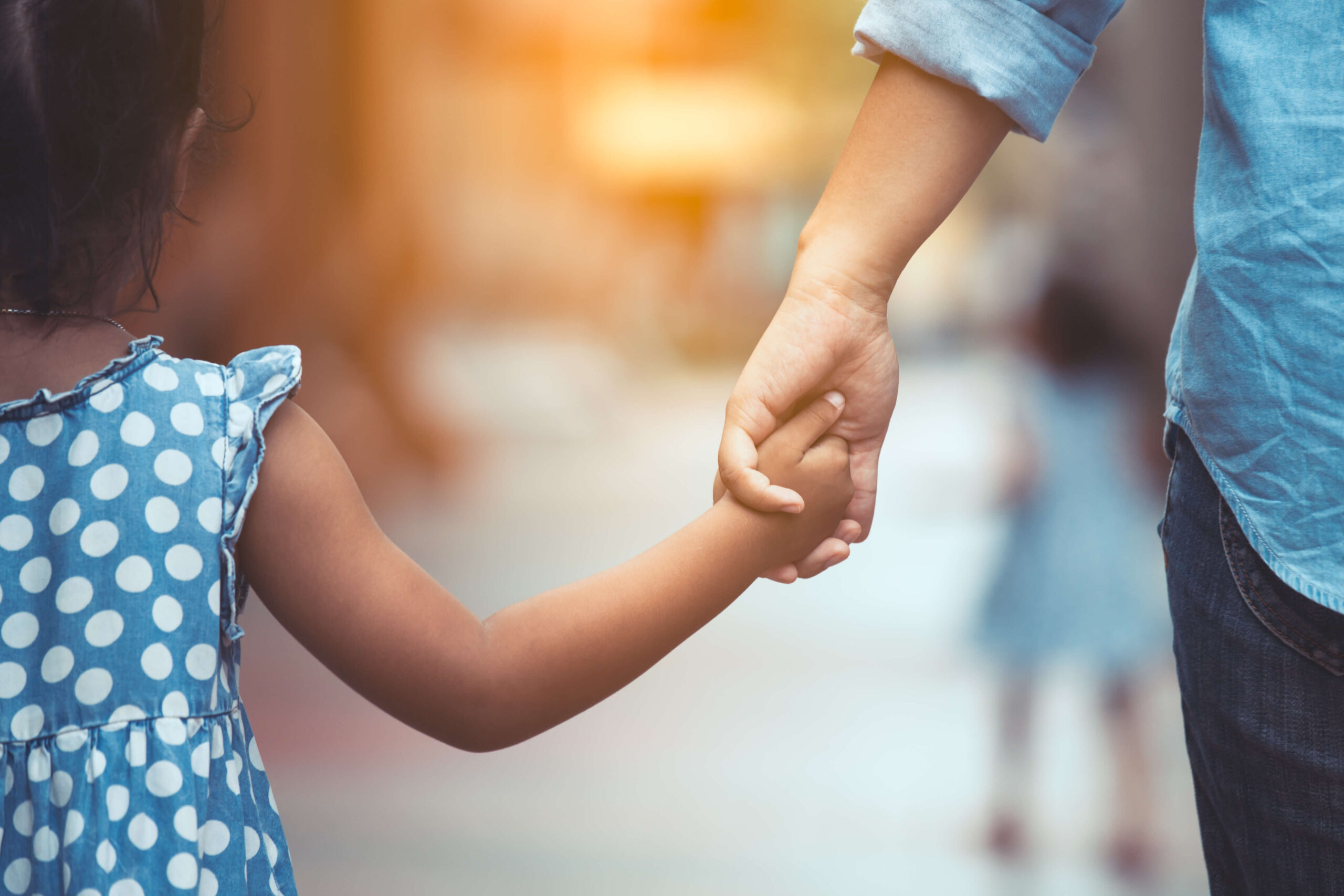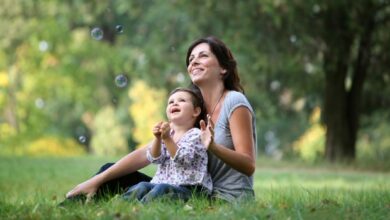As a single mom, living alone presents unique challenges and responsibilities. While raising a child independently is a rewarding experience, ensuring your safety and that of your child is paramount. This comprehensive guide, Safety Checklist for the Single Mom Living Alone, provides smart strategies to create a secure environment, offering peace of mind and confidence in your daily life.
The First Line of Defense
The first step in ensuring safety is to make your home a fortress. Securing your home involves more than just locking doors; it includes a comprehensive assessment and enhancement of all entry points.
Install High-Quality Locks and Deadbolts
When following the Safety Checklist for the Single Mom living Alone, it’s essential to invest in high-quality locks for every door and window. Deadbolts are especially effective, offering an added layer of security. Additionally, consider installing smart locks that provide keyless entry and remote locking features, enabling you to secure your home even when you’re away.
Reinforce Doors and Windows
Ensure that all exterior doors are solid and have peepholes. Reinforce windows with security film, which makes it difficult for intruders to break the glass. Window bars or security screens can also add an extra layer of protection without compromising aesthetics.
Utilize a Home Security System
In a Safety Checklist for the Single Mom living Alone, installing a robust home security system is essential. Today’s systems come equipped with advanced features such as 24/7 monitoring, motion detectors, and security cameras. Many of these systems also allow remote access through your smartphone, sending real-time alerts whenever something unusual is detected, ensuring you stay informed and protected at all times.
Consider a Video Doorbell
A video doorbell is an essential tool that enables you to see and communicate with anyone at your door without needing to open it. This feature is particularly valuable for those following a Safety Checklist for the Single Mom living Alone, as it provides the ability to verify the identity of visitors before allowing them entry.
Establish a Routine
Create a Daily Schedule
Plan your daily activities and stick to a routine. Whether it’s morning routines, school drop-offs, or bedtime rituals, consistency helps maintain a sense of normalcy and security for both you and your child.
Use Timers for Lights
Invest in timers for your lights to create the illusion that someone is home, even when you’re not. Set lights to turn on and off at different times, especially if you’re away for an extended period.
Inform Trusted Neighbors of Your Routine
If you have a trusted neighbor, inform them of your routine. This way, they can alert you if they notice anything unusual, like unfamiliar visitors or strange activity around your home.
Empower Them with Knowledge

Teaching your child about safety is crucial. Educating them on how to respond in various situations ensures that they are prepared to act responsibly when needed.
Teach Basic Safety Rules
Start by teaching your child basic safety rules, such as not opening the door for strangers and knowing how to contact you or emergency services. Role-playing different scenarios can help them understand how to respond appropriately.
Memorize Important Information
Ensure your child knows their full name, your phone number, and your home address. If they’re old enough, teach them how to dial emergency numbers and what to say when doing so.
Practice Emergency Drills
Regularly practice emergency drills, such as fire or intruder drills, so your child knows exactly what to do in case of an emergency. This practice can build their confidence and reduce panic in real-life situations.
Be Aware of Your Surroundings
Awareness of your surroundings is a key aspect of personal safety. Being alert and cautious can prevent potential dangers and keep you and your child safe.
Trust Your Instincts
Always trust your instincts. If something feels off, it probably is. Whether it’s a person lingering around your home or an unusual noise, don’t hesitate to take precautionary measures.
Avoid Distractions
When you’re out and about, it’s important to avoid distractions like excessive phone use. Staying aware of your surroundings, particularly when entering or leaving your home, is essential. Following this practice is a key part of the Safety Checklist for the Single Mom living Alone, as it helps you identify potential threats before they become serious.
Plan Safe Routes
Whether walking or driving, plan your routes ahead of time. Choose well-lit, populated areas, and avoid shortcuts through isolated or unfamiliar areas. If possible, vary your routes to and from home to avoid creating a predictable pattern.
Prepare for Emergencies
Emergency preparedness is essential for a single mom living alone. Having a clear plan ensures that you and your child know what to do in the event of an emergency.
Create an Emergency Kit
Assemble an emergency kit that includes essential items such as water, non-perishable food, a first-aid kit, flashlights, batteries, and important documents. Keep this kit in an easily accessible location.
Develop an Evacuation Plan
Create an evacuation plan for emergencies like fires or natural disasters. Ensure your child knows the exit routes and establish a meeting point outside the home. Practice this plan regularly.
Set Up a Safety Network
Establish a safety network of trusted friends, family members, or neighbors who can help in an emergency. Make sure they have your contact information and a spare key to your home if needed.
Maintain Online Security
In today’s digital age, online security is just as important as physical security. Protecting your online presence helps safeguard your personal information and prevents potential threats from affecting your life.
Use Strong Passwords
Create strong, unique passwords for all your online accounts. Avoid using easily guessable information such as birthdays or names. Consider using a password manager to keep track of your passwords securely.
Enable Two-Factor Authentication
Two-factor authentication (2FA) adds an extra layer of security to your online accounts. It requires a second form of verification, such as a text message or authentication app, making it harder for intruders to access your accounts.
Be Cautious with Social Media
Limit the amount of personal information you share on social media. Avoid posting real-time updates about your location, especially if you’re alone or with your child. Review your privacy settings regularly to control who can see your posts.
Equip Yourself with Skills
Knowing how to defend yourself is empowering and can be crucial in a dangerous situation. Consider taking steps to equip yourself with self-defense skills and tools.
Take a Self-Defense Class
Enrolling in a self-defense class can teach you practical skills to protect yourself in various situations. Many classes are specifically designed for women and offer techniques that don’t require physical strength.
Carry Personal Safety Devices
Consider carrying personal safety devices such as pepper spray, a personal alarm, or a stun gun. These tools can be effective in deterring an attacker and giving you time to escape.
Stay Physically Fit
Maintaining physical fitness can enhance your ability to defend yourself if necessary. Regular exercise can also boost your confidence and overall well-being, making you feel more secure in your daily life.
Ensure Stability and Security
Financial stability is an essential aspect of safety, especially for single moms. Being financially prepared can help you navigate unexpected challenges without compromising your security.
Create a Budget
Establish a budget that covers your essential expenses, such as rent, utilities, groceries, and childcare. Sticking to a budget can prevent financial stress and ensure that you have the resources needed to maintain your home and security.
Build an Emergency Fund
Save money for an emergency fund that can cover at least three to six months of living expenses. This fund provides a safety net in case of job loss, medical emergencies, or unexpected home repairs.
Secure Important Documents
Keep important documents, such as birth certificates, social security cards, and financial records, in a safe place. Consider using a fireproof and waterproof safe to protect them from potential hazards.
Protect Your Privacy and Personal Space
Establishing clear boundaries is vital for protecting your privacy and personal space. This is especially important when you live alone, as maintaining control over who has access to your home and life can enhance your safety.
Be Selective with Visitors
Limit who you allow into your home, and be cautious about letting in service personnel or strangers. Always verify the identity of anyone who needs to enter your home, and don’t hesitate to refuse entry if you’re uncomfortable.
Limit Sharing of Personal Information
Be mindful of who you share personal information with, including your address, phone number, and daily routine. Only disclose such information to trusted individuals and organizations.
Set Boundaries with Neighbors
While building a good relationship with neighbors is beneficial, it’s also important to set boundaries. Be friendly but cautious, and avoid oversharing details about your personal life.
Prioritize Your Well-Being
Finally, don’t forget to take care of yourself. Your well-being is critical to maintaining a safe and secure environment for your child. Self-care is not a luxury; it’s a necessity.
Manage Stress
Single parenting can be stressful, and high stress levels can compromise your ability to stay alert and make sound decisions. Find healthy ways to manage stress, such as exercise, meditation, or hobbies that relax and rejuvenate you.
Seek Support When Needed
Don’t hesitate to seek support when you need it. Whether it’s talking to a friend, joining a single mom support group, or seeking professional counseling, having a support system can make a significant difference
in your ability to cope with challenges and maintain a positive outlook.
Get Adequate Rest
Proper rest is essential for both physical and mental well-being. Ensure you’re getting enough sleep each night so you’re alert and able to handle the demands of parenting and maintaining your home’s security. If needed, create a relaxing bedtime routine that helps you unwind and get a good night’s sleep.
Nourish Your Body
Eating a balanced diet is crucial for maintaining your energy levels and overall health. Prioritize nutritious meals that provide you with the vitamins and minerals needed to stay strong and healthy, both mentally and physically.
Practice Mindfulness
Incorporating mindfulness practices into your daily routine can help you stay present and focused, reducing anxiety and improving your overall sense of safety. Simple mindfulness exercises, such as deep breathing or meditation, can be effective in managing stress and maintaining mental clarity.
Conclusion
As a single mom, living alone can be both empowering and challenging. By following the Safety Checklist for the Single Mom Living Alone, you can create a secure environment for you and your child, allowing you to focus on what truly matters nurturing your family and enjoying the precious moments of motherhood.
From securing your home to educating your child, staying vigilant, and taking care of your well-being, every step you take towards enhancing safety brings you closer to a life of confidence and peace of mind. Remember, preparedness is not about living in fear, but about embracing empowerment through thoughtful, proactive measures. With these strategies in place, you can navigate the unique journey of single motherhood with strength, resilience, and a deep sense of security.





